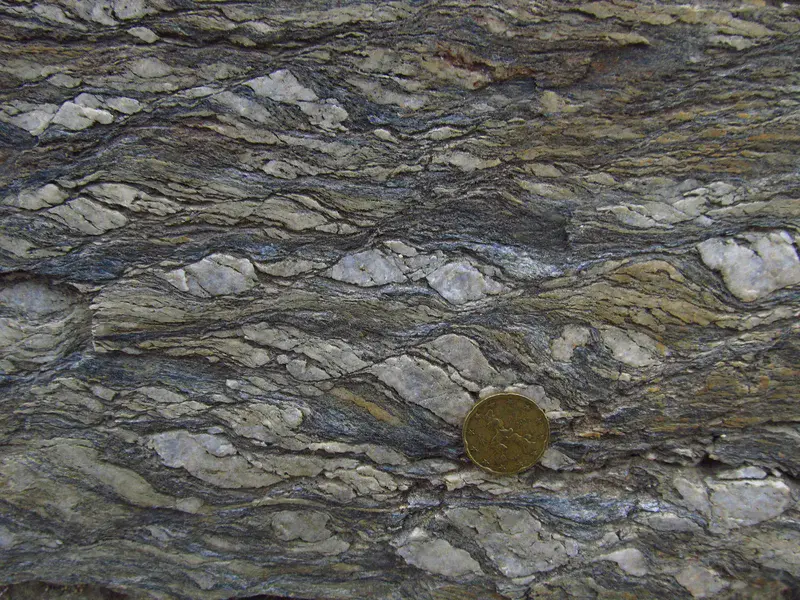
S-C mylonite in the Calamita Schists (Island of Elba, Italy)
by Samuele Papeschi, University of Pisa, Pisa, Italy
S-C mylonites developed in andalusite-cordierite micaschist (Calamita Schists) in the contact aureole of the Porto Azzurro pluton. The white layers are made of quartz, while the brown layers consist predominantly of white mica and biotite. Top-to-left (East) sense of shear.
References:
Papeschi, S., Musumeci, G., & Mazzarini, F. (2017). Heterogeneous brittle-ductile deformation at shallow crustal levels under high thermal conditions: The case of a synkinematic contact aureole in the inner northern Apennines, southeastern Elba Island, Italy. Tectonophysics, 717, 547-564. https://doi.org/10.1016/j.tecto.2017.08.020
Papeschi, S., Musumeci, G., & Mazzarini, F. (2018). Evolution of shear zones through the brittle-ductile transition: The Calamita Schists (Elba Island, Italy). Journal of Structural Geology, 113, 100-114. https://doi.org/10.1016/j.jsg.2018.05.023
Categories
Location
- Europe (3883)
- Southern Europe (1683)
- Italy (433)
- Exact location (10.3826 E, 42.7151 N)
Tags
- italy (42)
- mylonite (5)
- schist (10)
- elba (4)
- deformation (4)
- shear zone (1)
- s-c fabric (1)
- contact aureole (1)
- kinematic indicator (1)
Colours
Image properties
2816 × 2112 px;
image/jpeg; 2.2 MB
Camera:
Canon PowerShot SX130 IS
Taken on 4
December
2015
Submitted on 13 June 2020
Licence
Creative Commons Attribution-NonCommercial-NoDerivs 3.0 Unported (CC BY-NC-ND 3.0)
Credit
Samuele Papeschi (distributed via imaggeo.egu.eu)
Share
Appreciate
Report